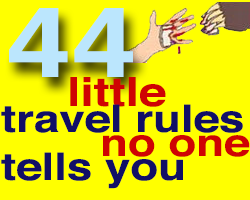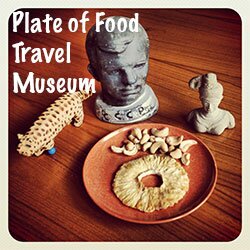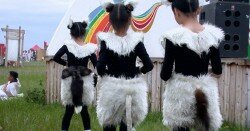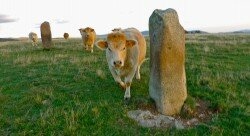Bagan, a 48 sq km area of thousands of red-brick temples in the desert-like plain along a curve of the Ayeyarwady River, was a big powerhouse capital of Burma for a few hundred years, but fell to ruin after the sword-yielding Mongols came rushing through. It’s now easily one of Myanmar’s top-two favorite attractions — along with Inle Lake in the Shan Hills — with tourists going barefoot up and down pagoda steps, followed (on occasion) with locals selling copies of George Orwell’s ‘Burmese Days,’ oil paintings, post cards, t-shirts and bottles of water. Some say it’s getting too touristy, but at some of the pagodas, where — with a flashlight — I found ‘hidden’ passageways and more hidden passageways, to go up alone to the temple top and watch the sun dip over the hills to the west, it can be remote. Still, lots of restaurants are geared to the banana-pancake and pizza-slice crowd. Yet traditions long past lurk everywhere.
The other night — after a couple gin-and-tonics with some west British balloonists (hard to explain) — I passed a guy with a long pole that he was poking into the tree. I stopped to find out what was going on. ‘Owl. Evil owl. I’m trying to get it out,’ the guy said in surprisingly good English. He worked at a small roadside stand serving Burmese-style curries and beer — all signs in local script. Is it OK? ‘No, dead. I shot it. With my catapult.’ (Small, wooden sling shot.) ‘Not easy to get out.’ He pointed to a giant white wing, the rest of the deceased bird out of view, lost in a hole where branches shot in all directions from the trunk. But why kill it? ‘It made my mother sick.’ How? ‘Its singing. If the owl doesn’t sing it’s OK, but when it sings it’s bad. Before, over there,’ he motioned across the road into the darkness, ‘A girl got sick from an owl. I tried to shoot it, but couldn’t kill it. The next day the girl died.’ She was two.
The next day I asked locals about it – most weren’t sure if it were just a local custom, others made fun of it. One asked, ‘Where were you, Big Pig Village?’ Indeed I was, named for a mythical big pig that used to terrorize locals before being killed by a king.
At one travel agent I stopped into, three 20-something women were huddled over a computer game when I dropped by for some information. I asked. One said, ‘Yes, some people belived these sorts of traditions, but I don’t. Some give an offering to the spirits of Tharabar Gate [an ancient brick gate to the king’s area of old Bagan – still standing] the first time they go through on a motorbike, horse cart or car. They give a bunch of bananas and a coconut. When I got a motorbike, my mother asked to give an offering, but I refused. The first day, I had an accident about half a mile after I went through! The next day I gave an offering and haven’t had an accident since – that was four years ago.’ She added, ‘But I don’t believe.’
Later, I dropped by the sick mother’s place to see how you were doing. Min Min – I learned his name – had on a Pink (the singer) shirt. I asked if he got the owl out. ‘Yes, yes. There were three more there too – but they don’t sing so they can stay. But if they start singing, I’ll kill them too.’ Where’s the owl now. ‘In the ground.’ How’s mom? ‘Very good today,’ pointing to his smiling 60-something mother, waving from the back of the roadside stand. ‘These are our beliefs and traditions. These, and the spirits, and the God [Buddha] – I believe.’











I’m sure Pink supports the killing of evil owls.